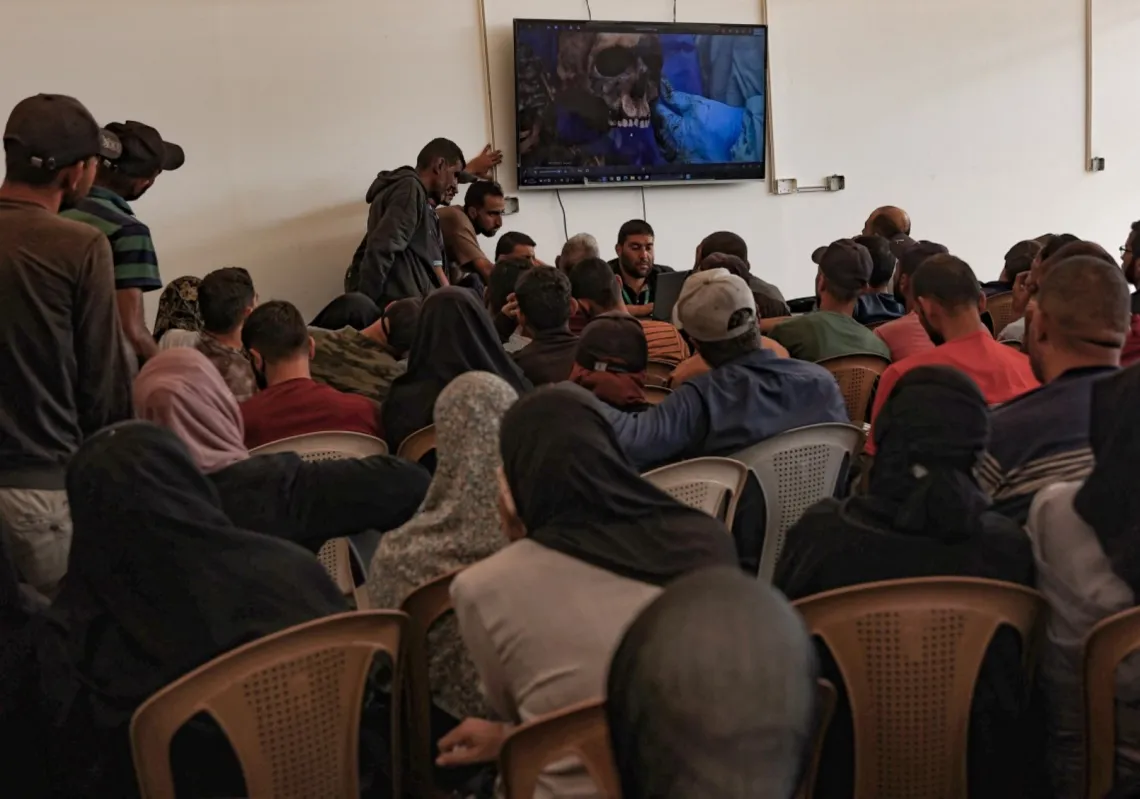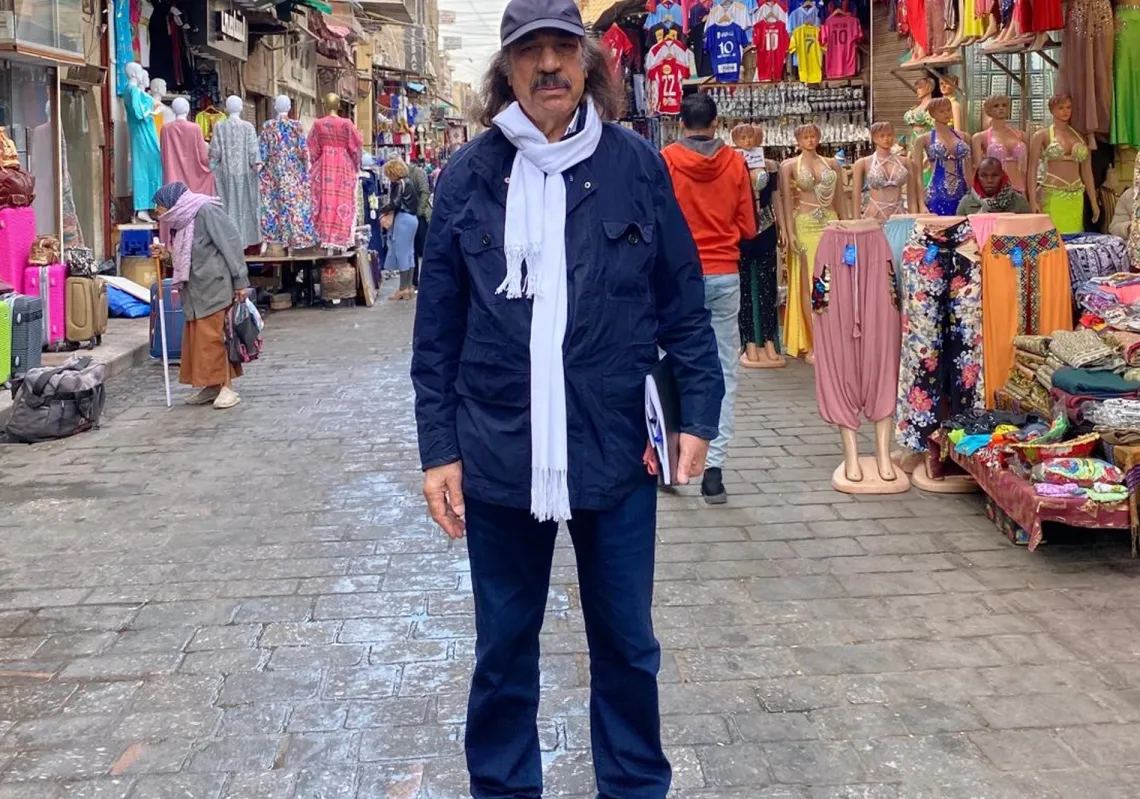 Iran's President Hassan Rouhani ( Getty Images)[/caption]
Iran's President Hassan Rouhani ( Getty Images)[/caption]
by:Hanin Ghaddar
As the New Year unfolds, the Middle East looks more complicated than a year ago, with Iran’s Shia militias gaining more ground in Syria, gearing up for elections in Iraq, solidifying power in Lebanon, and flaring up the crisis in Yemen. While it seems that the balance of power in the region is tipping to Iran’s favor, the New Year might bring forth some developments that could challenge Iran and its proxies, and open the Middle East to different scenarios. But it all depends how the U.S. is going to outline and implement its Iran strategy.
Saudi Arabia has raised valid concerns regarding Iran’s regional hegemony since former US president Barak Obama decided to prioritize the Iran Nuclear Deal over the instability in the region, allowing Iran to wreck havoc in Iraq, Syria and Yemen. Obama’s administration did not see eye to eye with Saudi Arabia on Iran’s regional plans. But recent developments - such as the breaking Politico story on Project Cassandra – have shown that Obama has even hampered DEA-led efforts aimed to undercut Hezbollah.
Saudi Arabia Faces Iran throughout the Middle East
The new U.S. administration sees Iran differently. Although Iran still enjoys roaming unstopped in the region, the Iranian regime is aware that the privileged they’ve enjoyed with the Obama’s administration are long gone, and that the appetite to stop Iran in the region is back in both the United States and the Middle East, where Iran today has more enemies than ever.
Tehran will try to move quickly to secure its objectives – to become the leading power in the Persian Gulf, and then to dominate the Arab world from the gulf to the Mediterranean. In 2018, Iran will try to consolidate its power by gaining international – mainly Western – recognition. However, there will be challenges.
In Lebanon, although Saudi Arabia allowed international powers to bring Prime Minister Saad Hariri back to Lebanon, where he recanted his resignation, it doesn’t mean that the Saudis are no longer concerned with Lebanon sliding further under Iran’s umbrella. Hariri went back with a clear idea about what Saudi Arabia wants to see in Lebanon. The French intervened to stop retaliatory measures by Saudi Arabia at the time being, but that doesn’t mean that no harm will be done. If the upcoming parliamentary elections favor a Hezbollah-led majority in the next parliament, Saudi political and financial support to Lebanon might cease.
This might also coincide with a well-defined U.S. Iran strategy that would result in an actual containing of Iran’s proxies in the region. Talks of a revival of project Cassandra might be translated into action, and more punitive measures against Hezbollah might be taken.
In 2018, Hezbollah might win Lebanon democratically, but it might also face more challenges.
In Syria, the scene is more complicated. Iran has won the ground, managed to save Bashar Assad’s regime, established a land-bridge the connects Iraq to Syria, via Bou Kamal in Deir Ezzour, and is almost done with its ethnic cleansing of the opposition pockets in and around the suburbs of Damascus. With the war almost over, Iran is under pressure to withdraw its militias from Syria, which they won’t do, after so much investment in resources and fighters. Russia will eventually find itself in a tight spot where its alliance with Iran in war will not be the same alliance during talks of peace. Vladimir Putin is leading his version of peace talks after the failure of Geneva, and wouldn’t want the war in Syria to go on.
Under serious international pressure, Putin prefers to see Iran out of Syria, mainly from the parts under the de-confliction agreements. With Israel attacking Iran almost on a daily basis in Syria, Russia might find itself pressuring Iran further if they do not want to see an Israeli-Iranian war in Syria.
Will a U.S. Iran Strategy See Light in the New Year?
Saudi Arabia is not heavily invested in Syria as it used to be, but it can still use its leverage to further pressure Russia. The U.S. is unlikely to withdraw its troops from Syria, and that could also constitute leverage that can be used to pressure both Russia and Iran. Once an Iran strategy is complete and ready to implement, these U.S. troops and military bases could be of great use in that direction.
In Iraq, the game seems to be more diplomatic than the rest of the region, for two reasons. One, Saudi Arabia had already been invested in soft diplomacy in Iraq’s political scene. Two, the anti-Iran sentiment – mainly among the Shia – is higher than it is elsewhere in the region.
Saudi Arabi has already invited a number of the anti-Iran Shia political figures, such as Prime Minister Haidar Al Abadi and popular political leader Muqtada Al-Sadr. Najaf leadership has already supported Abadi’s request for the Iran-backed Shia militias to disarm or not to run in the upcoming military elections, to take place in April 2018.
Iran wants Iraqi Shia parties to enter the election as one unit under the banner of the National Alliance. Earlier in September, and following a series of Iraqi official visits to Saudi Arabia, Tehran dispatched Expediency Council chief Ayatollah Mahmoud Hashemi Shahroudi to Baghdad, who wanted to meet with Shia leaders in an attempt to unify them ahead of the elections. He did in fact meet with several, including Prime Minister Haider al-Abadi, Islamic Dawa Party leader Nouri al-Maliki, and Ammar al-Hakim, who recently defected from the Iranian-supported Islamic Supreme Council of Iraq to head the new National Wisdom Movement.
But Shahroudi was not welcome in Najaf; he could not arrange meetings with any of the four major religious authorities there. Leading Shia cleric Muqtada al-Sadr also refused to meet with him. Iran might be more confident about its ability to influence Lebanon's May 2018 parliamentary elections, but getting its way in Iraq's April 2018 contest may prove more challenging. Sistani's rhetoric has recently changed, while Abadi, Sadr, and Hakim have all expressed interest in distancing their country from Iran and emphasizing Iraqi national identity rather than Shia identity in their campaigns. Najaf clearly agrees with this view and will probably support any Shia coalition that goes the Iraqi nationalist route.
While the Trump administration is supporting Abadi and his electoral campaign, Saudi Arabia can help encourage an Iraqi political alliance that can challenge Iran-backed candidates; empower Abadi and state institutions; support Najaf; and call for more cross-sectarian cooperation.
In Yemen, the scene is bloodier and the war seems to be raging on, at least in the first part of 2018. But the Houthis are losing popular support, mainly after killing Yemen’s president Ali Abdallah Saleh. The war also seems to be exposing the Houthis’ connection to Iran’s IRGC Quds Force. The missiles that landed in Saudi Arabia were proof of this connection, and the international community seems to be more aware of it. If an Iran strategy were to be implemented to contain the Quds Force regional activities, the Houthis will probably be part of it.
Trump’s administration and Saudi Arabia seem to have a lot in common when it comes to realizing threats and opportunities in the Middle East. What lacks is the translation of this realization into action that would contain Iran. If 2018 witnesses a solid U.S. Iran strategy, the region might start to see new scenarios. Otherwise, Iran will win yet another year.
Hanin Ghaddar is the inaugural Friedmann Visiting Fellow at The Washington Institute.








